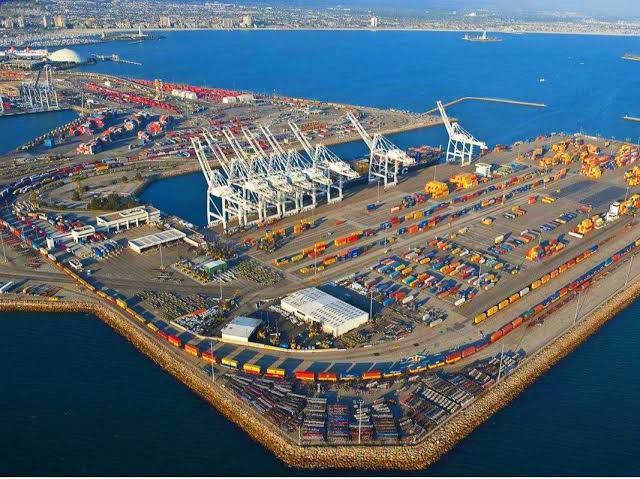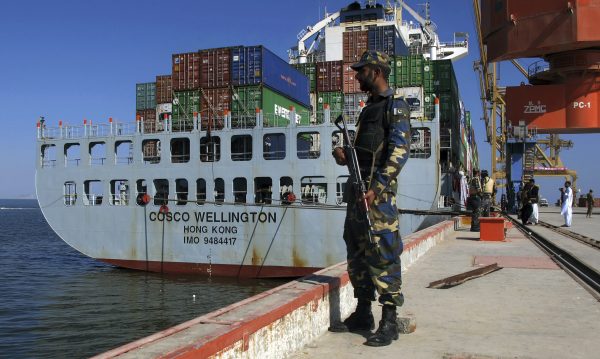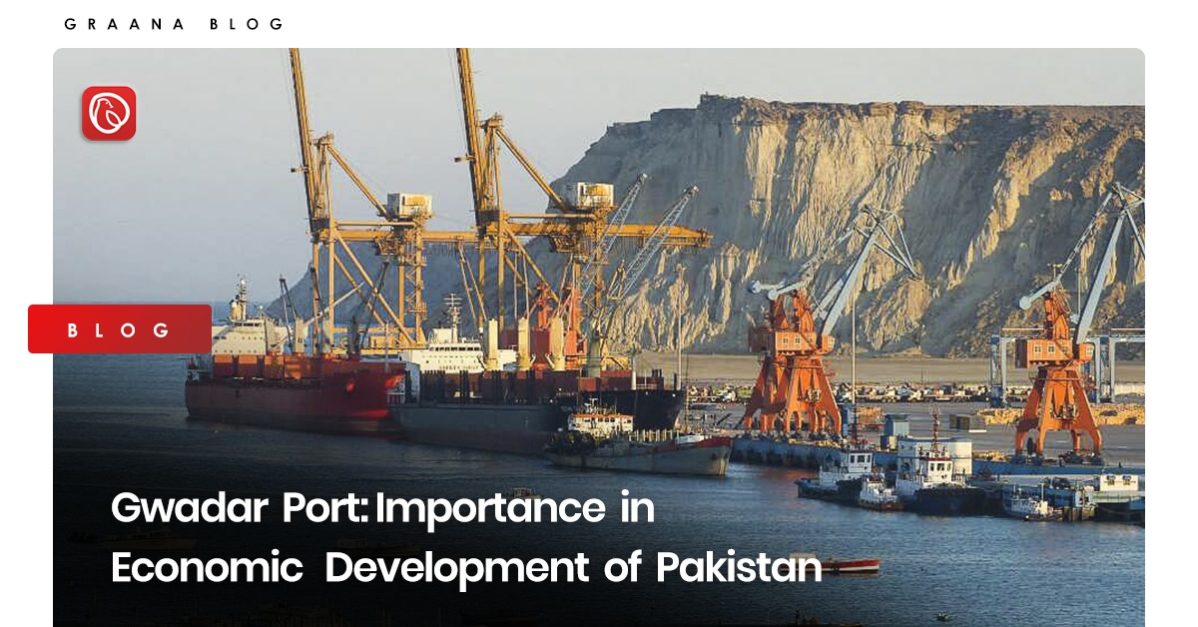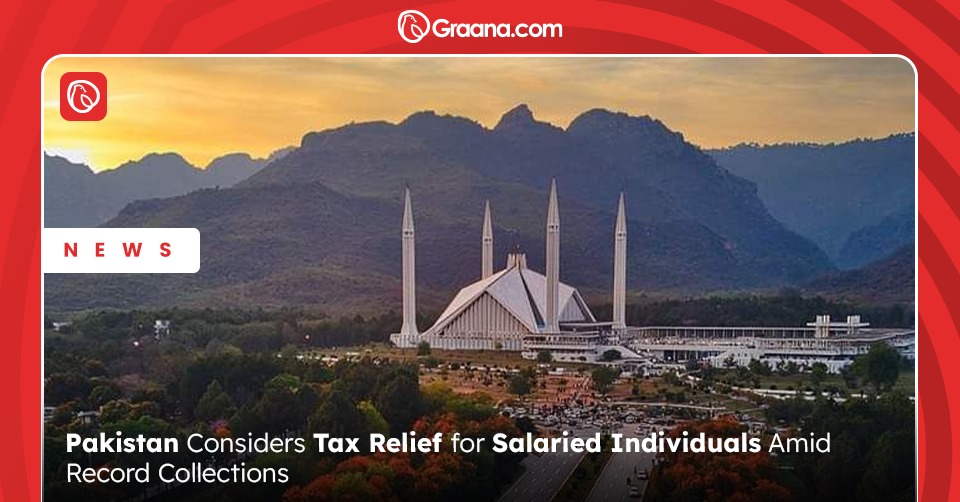In recent years, port cities have surpassed inland towns in terms of growth and development, prompting countries to prioritise these for trade purposes. The government of Pakistan recognises that the Gwadar Port could be the key to achieving sustainable economic growth by giving the country more exposure to maritime trade.
The investors have poised the port to become a significant commercial hub in the region with $62bn worth of investments in its infrastructure. Graana.com outlines the importance of Gwadar Port below, and it can pave the way for economic development in Pakistan.
Location of Gwadar Port

Gwadar Sea Port is located on the Arabian Sea in the southwestern province of Balochistan. The port is situated at the mouth of the Persian Gulf, close to the Strait of Hormuz, a vital maritime trade route.
It is a key component of the China-Pakistan Economic Corridor (CPEC), a $62 billion infrastructure development project launched in 2015. Its strategic location makes it essential for Pakistan’s economic growth and regional connectivity.
Gwadar Port Importance

Gwadar port has a great importance in Pakistan’s economy. One of the deepest seaports in the world, which is designated as a duty-free port and free economic zone by the Pakistani government, Gwadar offers tremendous potential for Pakistan, China, and other countries in the region, including Central Asian Republics, Europe, Turkey, Iran, India, the Middle East, Gulf States, and Africa.
Located at the entrance of the Strait of Hormuz and connected to over half of the world through CPEC via roads, railways, pipelines, and sea routes, Gwadar is set to become a major centre of global trade.
The city’s prime commercial areas, such as the Central Business District and avenues like Marine Drive, Padi Zer Boulevard, Balochistan Broadway, and Jinnah Avenue, are expected to attract national and multinational business organisations, entrepreneurs, and traders from around the world.
Additionally, Gwadar’s beautiful virgin beaches, sea life, and large open spaces make it an ideal location for tourism development. The Gwadar Development Authority has proposed a self-sustaining tourism resort on the west bay to cater to visitors. All these factors enhance the importance of Gwadar port.
Strategic Location
Gwadar port’s strategic location provides easy access to some of the world’s most vital sea lanes. It is situated close to the Strait of Hormuz, which is a gateway for one-third of the world’s oil shipments.
It also offers a shorter trade route between China and the Middle East, Africa, and Europe. The port is located only 120 nautical miles from the UAE’s Port of Fujairah, which is a major hub for oil trade.
Potential for Economic Development
CPEC aims to develop transportation, energy, and communication infrastructure to connect China with Pakistan and the rest of the world, with Gwadar Port as its center point.
The investors expect that the development of the port will create employment opportunities, stimulate economic growth, and attract foreign investment. Additionally, they anticipate that the port’s strategic location will make it a center of regional and international trade.
Connectivity
Investors expect that the development of Gwadar Port will enhance regional connectivity. The port will provide a shorter and more secure route for the transportation of goods between China, Pakistan, and the rest of the world.
The developers plan to connect the port to the national highway network and construct a railway line that will link the port with China and other Central Asian countries.
Investment Opportunities
The Gwadar Free Zone can attract substantial investment opportunities in Gwadar, given the new tax exemptions that the Pakistani government has rolled out. These aim to attract Chinese manufacturing industries to set up their units in Pakistan. It can increase employment opportunities for the locals. The port’s proximity to other Chinese ports makes it the closest port through which Chinese imports can enter Pakistan, boosting the country’s economy.
The Gwadar Free Zone’s development projects will benefit the entire area, including the 300 MW coal-based power plant, the water processing project, and the Pak-China Friendship Hospital. Investors are constructing the Gwadar Port New International Airport project. This will be equipped with world-class facilities and cargo handling capabilities.
Boost in Tourism
In addition to having a large number of historical monuments, Pakistan also boasts a diverse landscape. These monuments features snow-capped mountains, picturesque valleys, and stunning beaches. However, due to limited infrastructure and accessibility, many of these scenic spots have remained largely unexplored.
With the development of the port city of Gwadar, Pakistan has the potential to tap into the tourism industry’s full potential. The construction of modern transportation networks and state-of-the-art facilities will make it easier for tourists to explore the country. This will not only showcase its unique attractions but also create employment opportunities for its citizens.
Strengthen Pak-China Relations
The Gwadar port’s construction has the potential to strengthen Pak-China relations. China is investing millions of dollars to improve Pakistan’s economy. The port will help establish trade routes over the seashore that other Arab countries share. It is improving maritime relations and connectivity between the two countries.
The Chinese president has praised the relationship between China and Pakistan and their cooperation’s strong vitality. Cordial relations with other Islamic countries will also help both nations develop mutually beneficial relationships in the region, ultimately promoting peace and prosperity.
Challenges
Despite its potential, the development of Gwadar Port faces several challenges. Security remains a major concern, and the government is taking steps to improve the situation in the region. Infrastructure development is another challenge. The government is working to improve road and rail connectivity in the region, but progress has been slow. Critics have also criticized the port’s development for its potential impact on the environment and local communities.
In addition, the development of Gwadar Port also faces economic challenges. The port’s success is highly dependent on attracting investment and developing a robust trade network. However, the current geopolitical landscape and economic conditions in the region have made it difficult to attract investment and establish trade relationships.
The ongoing conflict in neighbouring Afghanistan and tensions between India and Pakistan have created uncertainty and instability. This tension is making it challenging to convince investors to commit to long-term projects in the area.
Additionally, the COVID-19 pandemic has disrupted global supply chains and trade, further complicating efforts to establish Gwadar Port as a viable trade hub. Despite these challenges, the government remains committed to developing Gwadar Port. Also they are unlocking its potential as a gateway for trade and economic development in the region.
The Bottom Line
Gwadar Port is a key component of CPEC. It has the potential to become a hub of economic activity in the region. The port’s strategic location provides easy access to some of the world’s most vital sea lanes. It also offers a shorter trade route between China and the Middle East, Africa, and Europe.
Investors expect that the port’s development will enhance regional connectivity, create employment opportunities, stimulate economic growth, and attract foreign investment. Despite facing several challenges, the development of Gwadar Port is essential to Pakistan’s economic growth and regional connectivity.
If you want to know more about significance of the neighbouring countries, follow Graana blog.




